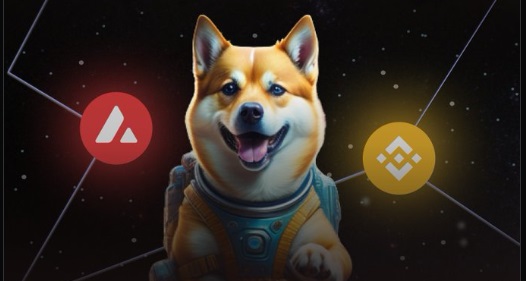Join Our Telegram channel to stay up to date on breaking news coverage
In a contentious interaction, Tether, a leading stablecoin operator, has vociferously criticized Deutsche Bank following the publication of a report that casts doubt on the viability of stablecoins, including Tether’s own USDT. The report, dated May 7, speculated on the possibility of a destabilizing “peso moment” similar to the 2022 implosion of Terraform Lab’s TerraUSD (TUSD), which erased about $40 billion from the market in mere days.
Analysis of Stability Concerns and Transparency in Tether’s Operations Highlighted by Deutsche Bank Report
Deutsche Bank’s analysis, which reviewed 334 currency pegs over the past 223 years, determined that nearly half of these pegged currencies failed within their median lifespan of eight to ten years. This historical perspective led Deutsche Bank analysts to predict considerable volatility and eventual depegging incidents within the cryptocurrency stablecoin sector. The analysts highlighted a general lack of transparency and susceptibility to speculative movements as key factors likely to lead to the failure of many stablecoins.
Moreover, the bank specifically targeted Tether, pointing to a “questionable” solvency status and opaque handling of its reserve disclosures. In response, Tether issued a statement attacking the credibility of the report, criticizing it for its lack of concrete data and reliance on “vague assertions.” The stablecoin firm also dismissed the comparison to TerraUSD as “misleading and irrelevant,” given that Terra was an algorithmic stablecoin, unlike Tether, which is backed by reserves.
Tensions Escalate Over Stablecoin Viability and Financial Transparency
Tether’s spokesperson responded that Deutsche Bank’s critique seemed ironic, particularly given the bank’s own history of regulatory fines and penalties, which could be seen as undermining its authority to assess others within the financial sector. Despite criticism over its transparency, Tether has provided several financial attestations indicating that it maintains over $110 billion in fiat-denominated reserves, although these attestations are not equivalent to a full financial audit. Financial audits delve into data, risks, and compliance issues not previously disclosed, whereas an attestation merely captures a snapshot of certain data points.
The scrutiny of Tether’s reserve transparency has been a longstanding issue. In 2021, a settlement required Tether to pay an $18.5 million fine and prohibited it from operating in New York, following allegations that it misrepresented how much of its reserves were backed by fiat collateral. Despite this, Howard Lutnick, CEO of Cantor Fitzgerald, expressed confidence in Tether’s financial standing, stating his belief that the company indeed holds the necessary funds.
Through this dispute, the fundamental concerns about the stability and transparency of the stablecoin market continue to be highlighted, drawing attention to the delicate balance between innovation in cryptocurrency and the need for regulatory oversight and clear financial practices.
"Deutsche Bank's history of fines and penalties raises doubts about its own standing to critique others in the industry. DB was also named the riskiest bank in the world by the International Monetary Fund."
Tether slams Deutsche Bank over suggestion its stablecoin could fail…
— Paolo Ardoino 🍐 (@paoloardoino) May 10, 2024
Dogeverse: Revolutionizing the Meme Coin Market Through Chain-Hopping Innovation
Dogeverse introduces a groundbreaking concept in the cryptocurrency market, characterized by its ability to operate across six different blockchain platforms, thus providing significant advantages both in the immediate and distant future. This token is not only unique due to its interoperability but also for its engaging mascot, Cosmo, a charming Shiba Inu, which enhances its appeal as a meme coin.
Functioning on diverse blockchains such as Ethereum, BNB Chain, Polygon, Base, Solana, and Avalanche, Dogeverse started as a meme coin but shows potential for evolving into much more. This multi-chain functionality not only broadens its accessibility, attracting users from various platforms who appreciate different features—like Solana’s cost-effectiveness or Ethereum’s innovative edge—but also addresses and potentially unites the fragmented nature of the blockchain community. By leveraging technologies like Wormhole and PortalBridge, Dogeverse aims to foster a unified community across these varied chains.
Moreover, the project is rich with developing folklore. Cosmo, the project’s mascot, is central to a growing mythology, with each blockchain’s community potentially adding to Cosmo’s legend, elevating him to a mythical status that could rival even Dogecoin in popularity.
Dogeverse has an extensive total supply of 200 billion tokens, with 30 billion allocated to its structured presale. This presale is segmented into ten phases, starting at a token price of $0.0000290 and escalating to $0.000299 by the final stage. The funding goals are set with a soft cap of $8.83 million and a hard cap at $17.002 million.
The token’s multi-chain strategy and the allure of its lore have propelled a swift fundraising success, amassing over $300,000 within the first day of the presale. The enthusiasm surrounding this innovative token continues to grow, with potential investors encouraged to learn more and participate at thedogeverse.com.

Related News
- Bitfinex’s Tether CEO Denies Cyberattack Amidst F Society Ransom Demands
- Tether Takes Action: Freezing Assets Amid Venezuela’s Crypto Strategy for Oil Exports
- Tether Hits Record $4.5 Billion Profit In First Quarter On Gains From Bitcoin And Gold
- Tether Integrates USDT Stablecoin with TON Blockchain, Expanding Its Web3 Presence
Best Wallet - Diversify Your Crypto Portfolio
- Easy to Use, Feature-Driven Crypto Wallet
- Get Early Access to Upcoming Token ICOs
- Multi-Chain, Multi-Wallet, Non-Custodial
- Now On App Store, Google Play
- Stake To Earn Native Token $BEST
- 250,000+ Monthly Active Users
Join Our Telegram channel to stay up to date on breaking news coverage


